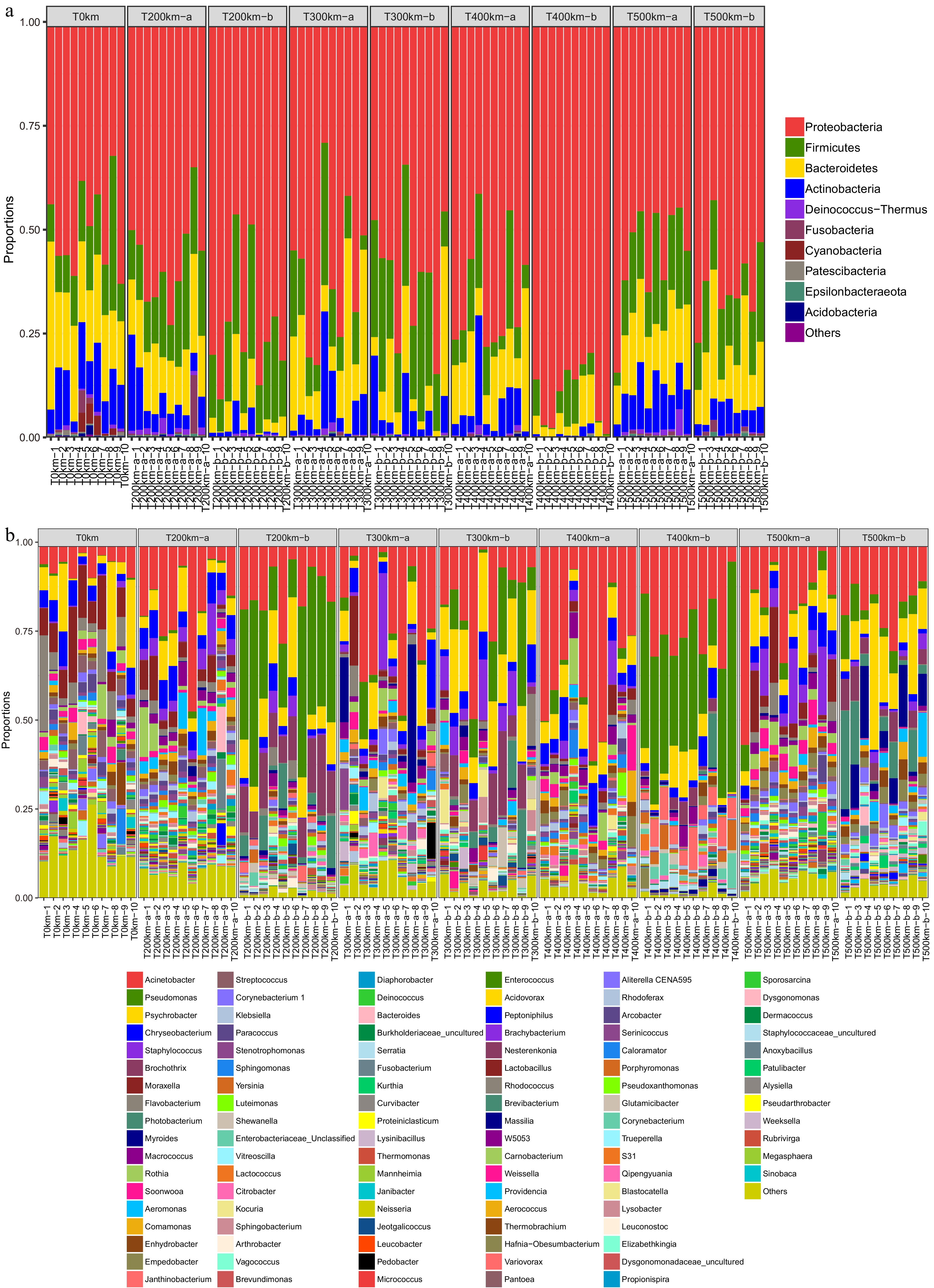-

Figure 1.
A diagram of sampling sites for microbial counting.
-

Figure 2.
Changes in vehicle temperature and humidity and carcass temperature during transportation. (a) Vehicle temperature, (b) vehicle humidity, (c) carcass temperature.
-

Figure 3.
Microbial colony counts on the surface of pig carcasses. (a) Before transportation, (b) at the end point of transportation, (c−f) at the different market points. a,b Different letters indicate significant differences among groups (P < 0.05).
-

Figure 4.
PCA scores plot of samples. T0km, the start point of transportation; T200km-a, T300km-a, T400km-a, T500km-a, the end points of 200, 300, 400 and 500 km transportation; T200km-b, T300km-b, T400km-b, T500km-b, the market points after 200, 300, 400, and 500 km transportation.
-

Figure 5.
Microbial composition in samples. (a) Phyla; (b) genera. T0km, the start point of transportation; T200km-a, T300km-a, T400km-a, T500km-a, the end points of 200, 300, 400 and 500 km transportation; T200km-b,T300km-b, T400km-b, T500km-b, the market points after 200, 300, 400, and 500 km transportation.
-
Transportation distance /km Vehicle temperature/ºC Vehicle humidity/ºC Carcass temperature/ºC 200 3.49 ± 0.21ab 91.10 ± 9.87a 2.87 ± 0.54ab 300 3.42 ± 0.19ab 88.83 ± 5.70ab 3.04 ± 0.51ab 400 3.34 ± 0.21b 83.73 ± 5.26b 2.70 ± 0.43b 500 3.62 ± 0.21a 88.16 ± 5.81ab 3.25 ± 0.35a a,b Different letters in the same column indicate significant differences among distance groups (P < 0.05). Table 1.
Temperature and humidity values in refrigerated vehicles.
Figures
(5)
Tables
(1)